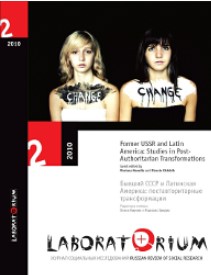NEW POVERTY IN ARGENTINA AND RUSSIA: SOME BRIEF COMPARATIVE CONCLUSIONS
NEW POVERTY IN ARGENTINA AND RUSSIA: SOME BRIEF COMPARATIVE CONCLUSIONS
Author(s): Gabriel Kessler, María Mercedes Di Virgilio, Svetlana YaroshenkoSubject(s): Economic history, Labor relations, Economic policy, Government/Political systems, Welfare systems, Comparative politics, Transformation Period (1990 - 2010), Socio-Economic Research
Published by: Центр независимых социологических исследований (ЦНСИ)
Keywords: New poverty; Argentina; Russia; Social policy; impoverished middle classes; standard of living;
Summary/Abstract: In general, the concept of new poverty focuses on the emergence of groups characterized by strong downward mobility, as well as previously unknown types of poverty. Its specific definition, therefore, varies among countries. The cases of Russia and Argentina illustrate this variation. In Russia, new poverty became a subject of debate following the market reforms of the 1990s, several years later than in Argentina. Poverty in post-Soviet Russia has a number of specific features. Firstly, it is a widespread phenomenon. Impoverishment peaked in 1999: at that time, depending on the standards used, the share of poor people was between 20 and 50 percent. Since the early 2000s, owing to economic stabilization, the number of poor people has been slowly reduced, but the share of the population with incomes lower than the subsistence minimum is still high—between 8 and 35 percent of Russians. Secondly, it is a problem that affects previously secure social strata, the so-called “new poor”: economically active people who were protected in Soviet times but now face sustained downward mobility and employment insecurity.
Journal: Laboratorium. Журнал социальных исследований
- Issue Year: 2/2010
- Issue No: 2
- Page Range: 252-256
- Page Count: 5
- Language: English

